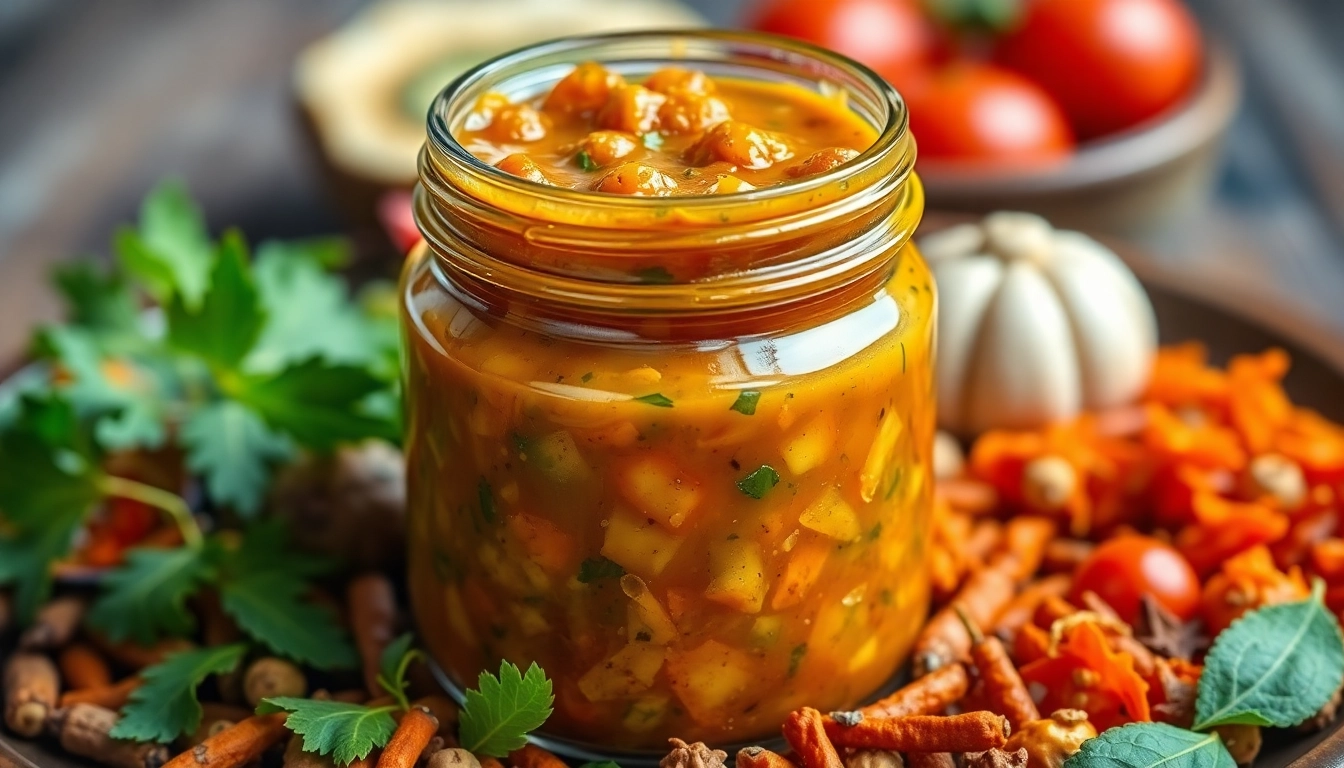Understanding the Market for Samosa Chutney
The global and domestic markets for Indian condiments and accompaniments like Samosa Chutney have seen remarkable growth over recent years. This surge is driven by changing consumer preferences towards authentic, flavorful foods and the increasing popularity of Indian cuisine worldwide. Consumers today are seeking products that not only offer taste but also align with their health consciousness, cultural identity, and convenience needs.
Several key trends underscore the evolving market landscape for Samosa Chutney. The rise of organic and natural ingredients appeals to health-savvy buyers, while the growing diaspora maintains traditional culinary habits, fueling demand for authentic chutneys. Moreover, the modern retail environment—including supermarkets, online grocery platforms, and specialty food stores—provides vast distribution channels, making Samosa Chutney accessible to a broader audience.
Consumer Preferences and Trends
Today’s consumers look for products that are flavorful, convenient, and butcher-free. The preference for spicy, tangy, and savory profiles in Samosa Chutney aligns perfectly with its traditional flavor palette. Additionally, consumers are increasingly demanding products made with high-quality, organic ingredients, free from artificial preservatives or additives. This trend is a critical opportunity for producers focused on quality manufacturing and certification, setting their offerings apart in a crowded marketplace.
Another significant trend is the shift towards healthier options that still deliver on taste. For instance, chutneys with reduced sugar or salt content, or those enriched with superfoods and exotic herbs, are gaining popularity. The rise of plant-based diets and the inclination towards gluten-free or preservative-free products further influence formulation choices. Importantly, packaging that emphasizes these health benefits can enhance consumer appeal and foster loyalty.
Identifying Target Demographics
Target demographics for Samosa Chutney encompass a broad spectrum. Ethnic communities and Indian households constitute the primary consumer base, where traditional taste preferences predominate. Additionally, urban millennials and health-conscious individuals represent a growing segment seeking authentic flavors with modern health benefits.
Export markets including the Middle East, North America, Europe, and Southeast Asia open opportunities to tap into diverse consumer groups interested in Indian street foods, snacks, and accompaniments. Leveraging detailed market research helps to understand regional flavor profiles, preferred spice levels, and packaging preferences, enabling manufacturers to customize products accordingly.
Competitive Landscape and Positioning
The market for Samosa Chutney is competitive, with numerous traditional and modern brands vying for consumer attention. To stand out, manufacturers must focus on authentic taste, superior quality, innovation, and reliable supply chains. Emphasizing certifications such as FSSAI, organic labels, and quality control standards enhances credibility and consumer trust.
Positioning strategies should include highlighting unique selling points such as rural or traditional recipes, gluten-free or preservative-free formulations, and eco-friendly packaging. Building a storytelling around cultural roots and authenticity can foster emotional connections with consumers, increasing brand loyalty.
Product Packaging and Branding for Samosa Chutney
Designing Attractive and Functional Packaging
Effective packaging must blend visual appeal with practicality. Clear labeling with vibrant colors that reflect the traditional Indian aesthetic helps attract attention on retail shelves. Incorporating transparent panels allows consumers to view the product, enhancing trust in quality.
Functionality involves designing packaging that preserves freshness, is easy to open, resealable, and provides adequate portion control. Using eco-friendly materials appeals to environmentally conscious consumers and aligns with sustainability goals.
Brand Messaging and Unique Selling Points
Your brand’s messaging should emphasize authenticity, quality, and health benefits. Incorporate storytelling that highlights the traditional recipe, natural ingredients, and health certifications to build trust. For example, “Made with authentic Rajasthani Chilli and Garlic, handcrafted for true spice lovers” could be an impactful slogan.
Highlighting USP—like preservative-free or organic ingredients—can differentiate your Samosa Chutney in a competitive market. Consistent branding across labels, packaging, and marketing collaterals reinforces recognition and loyalty.
Labeling Standards and Certifications
Compliance with local labeling standards such as FSSAI (India), USDA Organic, or ISO certifications ensures legal adherence and assures consumers of product safety and quality. Labels should include ingredient lists, nutritional information, expiry dates, batch numbers, and certification logos.
Clear and culturally appropriate labeling enhances transparency and can be used as a marketing tool to communicate quality standards, origin, and health benefits effectively.
Effective Digital and Offline Marketing Techniques
Leveraging Social Media Campaigns
Social media platforms like Instagram, Facebook, and TikTok offer powerful channels to showcase your Samosa Chutney’s appeal. Engaging content, such as recipe videos, customer testimonials, and behind-the-scenes manufacturing processes, can foster community engagement.
Collaborations with food bloggers, chefs, and influencers help tap into niche markets and expand reach. Running targeted ads based on demographics and geographic location enhances visibility to ideal customers.
Participating in Food Exhibitions and Trade Shows
Shows like Biofach International or India Food Forum provide excellent platforms for live demonstrations, tasting sessions, and networking with buyers and distributors. Given SpiceNest’s presence at major global exhibitions, participating regularly helps keep your brand top-of-mind among industry leaders and customers.
Preparing attractive booths, offering samples, and distributing branded materials increase brand recall and open B2B opportunities for exports and domestic distribution.
Optimizing Local Retail and Wholesale Distribution
Strategic placement in local supermarkets, convenience stores, and wholesale markets ensures that your Samosa Chutney is accessible to consumers. Developing relationships with distributors and retailers allows for better shelf placement and promotional support.
Offering attractive margins, logistics support, and point-of-sale marketing displays can incentivize retailers to prioritize your brand.
Ensuring Quality and Consistency in Samosa Chutney Production
Sourcing Premium Ingredients
Quality begins with sourcing authentic, fresh ingredients such as dried red chilies, garlic, spices, and herbs from certified suppliers. Establishing supplier quality agreements and conducting regular audits help maintain ingredient integrity.
Implementing Manufacturing Best Practices
Adopt Good Manufacturing Practices (GMP) and HACCP standards to ensure safety and consistency. Automated processing, precise control of temperature, and contamination prevention measures are essential.
Investing in modern machinery and skilled staff ensures uniform flavor, texture, and shelf life across batches.
Gathering Customer Feedback for Continuous Improvement
Customer reviews, taste tests, and surveys offer valuable insights into flavor preferences and product quality. Incorporate this feedback to refine formulations, packaging, and marketing strategies.
Launching pilot batches before large-scale production allows testing innovations with minimal risk.
Measuring Success and Scaling Your Samosa Chutney Business
Tracking Sales and Engagement Metrics
Utilize POS systems, e-commerce analytics, and social media insights to monitor sales volume, customer engagement, and promotional effectiveness. Key performance indicators (KPIs) like repeat purchase rate and customer acquisition cost help in assessing progress.
Adjusting Strategies Based on Data Insights
Regular data analysis enables dynamic marketing and production adjustments. For instance, if certain flavors or packaging formats outperform others, focus resources accordingly.
Expanding Product Line and Market Reach
After establishing a strong foothold, consider diversifying your product portfolio—adding variations like green chutney, spicy garlic, or regional recipes—and entering new geographical markets. Collaborations with distributors and participation in international trade fairs facilitate scaling efforts.
Investing in branding, certifications, and technology upgrades ensures sustained growth and competitiveness.









